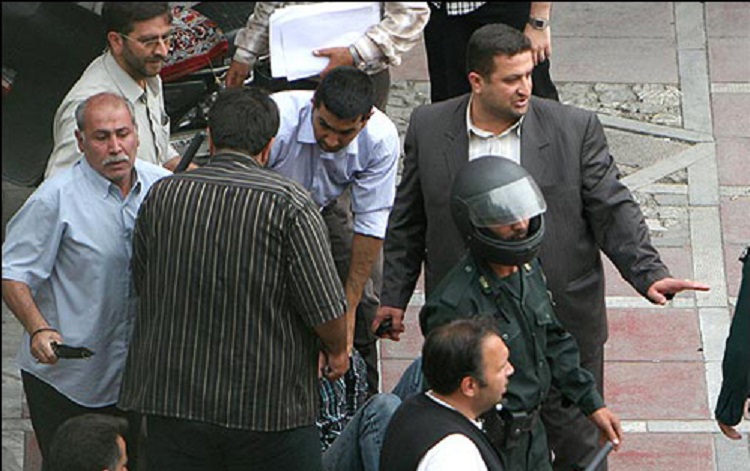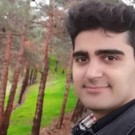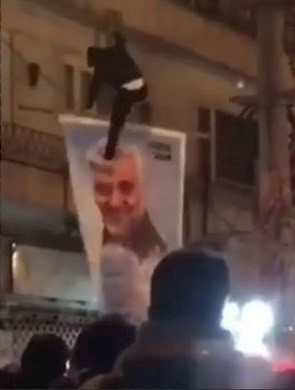
By Pooya Stone
“When we talk of asymmetric warfare, we mean that one side has arms and means that the other side lacks, and at times even ignores,” Iranian regime’s supreme leader Ali Khamenei said.
Slain IRGC Quds force commander Qassem Soleimani had a passion for marksmanship.
He began his military career, back in the 1980s, when he joined the IRGC in the eight-year-long Iran-Iraq war, as a young sniper.
By the end of that war, he was already commanding the IRGC 41st Sarollah division, a post he maintained until assigned as head of the Quds force, the extra-territorial arm of the IRGC, in 1998. But the passion for sniping seemed to stay with him. 
In 2005, evidence came out that special arms, including Austrian, made Steyr HS50 heavy sniper rifles were smuggled to Iraq, to find their way into the hands of Iraqi “insurgents” fighting US forces in the country. This 12.7mm caliber rifle’s bullets can penetrate any body-armor at a range of one mile and even light armored vehicles such as Humvees.
According to The Telegraph, the “National Iranian Police Organization” had purchased 800 of the fine weapons from Austria in 2005.
Within 45 days of the first HS50 Steyr arriving in Iran, an American officer in an armored vehicle was shot dead in Iraq by the same kind of weapon. Defense sources later reported that no less than a hundred HS50s were discovered in Iraq.

On July 20, 2018, an Israeli soldier was killed at a fence in the Gaza strip while trying to persuade a large group of Palestinians to get away from the fence. A Hamas sniper, apparently using an Iranian AM50 sniper rifle, a model copied on the famous HS50s, killed the Israeli soldier on the Israeli side of the fence.
Because of the HS50 rifles exported to Iran, the United States included Steyr-Mannlicher among nine companies it imposed sanctions on because they were caught supplying weapons to Iran, according to the Strategy page. Steyr-Mannlicher insisted that the deal was legit and had a difficult time getting out from under the sanctions, the company promptly supplied the United States with the serial numbers of the HS50 rifles delivered to Iran. Some of these HS50s showed up in Lebanon, Syria, Yemen, and other conflict areas.
On another Middle east theatre, the Taliban have been receiving quantities of different armament and ammo from Iran, all through the Quds Force which is charged with all extraterritorial military activities. After 2010, the Taliban obtained a considerable number of Iranian copies of the Soviet Dragunov precision rifle and smaller quantities of the Daraskov long-range, 14.5mm heavy rifle. The Quds force also delivered their long-range Shaher precision rifles.
IRGC’s Quds force oversaw the smuggling of those rifles, along with other armaments, like surface to surface missiles, drones, etc. to many points of conflict in the region.
But more than the weapons, the ways to use the weapons were taught by the Quds force to their end-users.
When over three months ago an anti-Iranian uprising began in Iraq, Qassem Soleimani was quick enough to replace the Iraqi PM Adel Abdolmahdi in an urgent session of the Iraqi High-Security Council, to help find ways out of the crises for the Iraqi government. He reassured the Iraqis that given their experience in quenching Iran uprisings in 2017-2018, he would come up with quick, efficient solutions to the crises.
During the next days, several young Iraqi protesters were shot dead, from atop tall buildings, by snipers apparently not known to Iraqi officials. At least, official denials were issued by the government as to their lack of knowledge on the identity of the snipers.
Later, one sniper was caught by an angry mob and beaten to death, with witnesses saying he did not speak fluent Arabic but only Farsi.
No less than 450 protesters have since been shot in Iraq, virtually all of them without the shooter being identified. Most of the victims died of head or chest wounds.
But Qassem Soleimani, who was known as the main extra–territorial instigator of war in the Iranian regime, had not to wait for long before putting to test his repressive abilities, this time back home in Iran.
In mid-November 2019, popular protests flared up in Iran following a three-fold price hike in gasoline prices. In only two days, more than 150 cities nationwide joined the protests. Demands for lower gas prices soon turned into demands for regime change and democracy for Iran. Haj Ghassem, as Soleimani was named in the Iranian regime’s inner circles, was called to the rescue. As a prelude to the repressive measures to be undertaken, the internet was shut down, and a real massacre was carried out behind closed doors.
The Iranian opposition MEK announced that 1500 protesters were killed during the three days following the supreme leader Ali Khamenei’s decision to use the utmost force to suppress the uprising. In one city in southern Iran, Mahshahr, tanks, and heavy machine guns were used by oppressive forces. But in Tehran and many other cities which saw a lot of huge demonstrations, most of the victims were shot from roof-tops, by snipers.

Pooya Bakhtiari, a 27-year-old engineer living in Karaj, close to Tehran, now turned into an icon of Iran protests, was among those suffering the same fate. His family was warned by the authorities not to hold funeral ceremonies and were arrested when they refused to listen.
But Haj Qassem’s method again proved its efficiency. In fact, he was quoted as having said that there was no rival to Iran when it came to “asymmetric warfare”.
In one act of that asymmetric warfare, 52 unarmed MEK members residing in camp Ashraf in Iraq were massacred on September 1, 2013, by Qassem Soleimani’s mercenaries sent, with full Iraqi complicity, into the camp. The day after Soleimani boasted “a strategic military gain over the opposition” during a closed-door session in the Iranian parliament explaining details of the heinous “asymmetric” operation.
For seven years, 146 MEK members were killed in attacks orchestrated by Soleimani against their camps which were under UN surveillance. In a message to General David Petraeus, after Quds force backed militia had shelled the US embassy in Baghdad, Soleimani wrote: “General Petraeus, you should be aware that I, Qassem Soleimani, control Iran’s policy for Iraq, Syria, Lebanon, Gaza, and Afghanistan.”
In fact, Iran’s ambassadors to Iraq were all active Quds force members, with a mission, apart from others, to eliminate the opposition MEK residing in Iraq since the 1980s.
Sharpshooters killing unarmed demonstrators from a safe distance is one aspect of this asymmetric warfare. The way Haj Qassem saw conflict: produce the utmost negative effect on demonstrators’ moral so they would think twice before getting on the street again.
“They should be afraid of us. Once they lose fear, we have no way to stop them,” he used to say.
Less than two months after his death in Iraq, the Iranian people are again in the streets, urging regime change. Qassem Soleimani was however right in one aspect: the regime has no way to stop the population because they have lost fear. 


